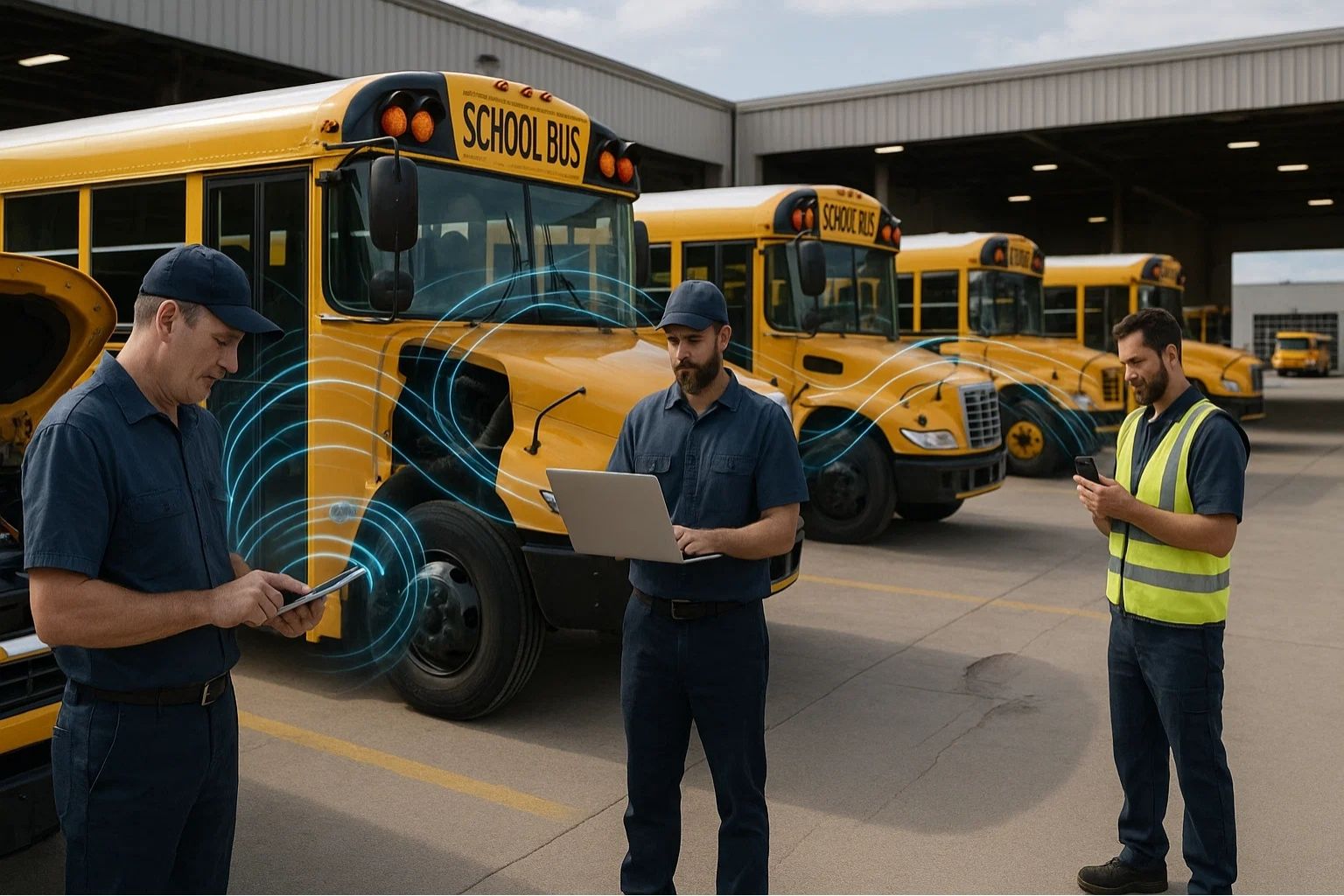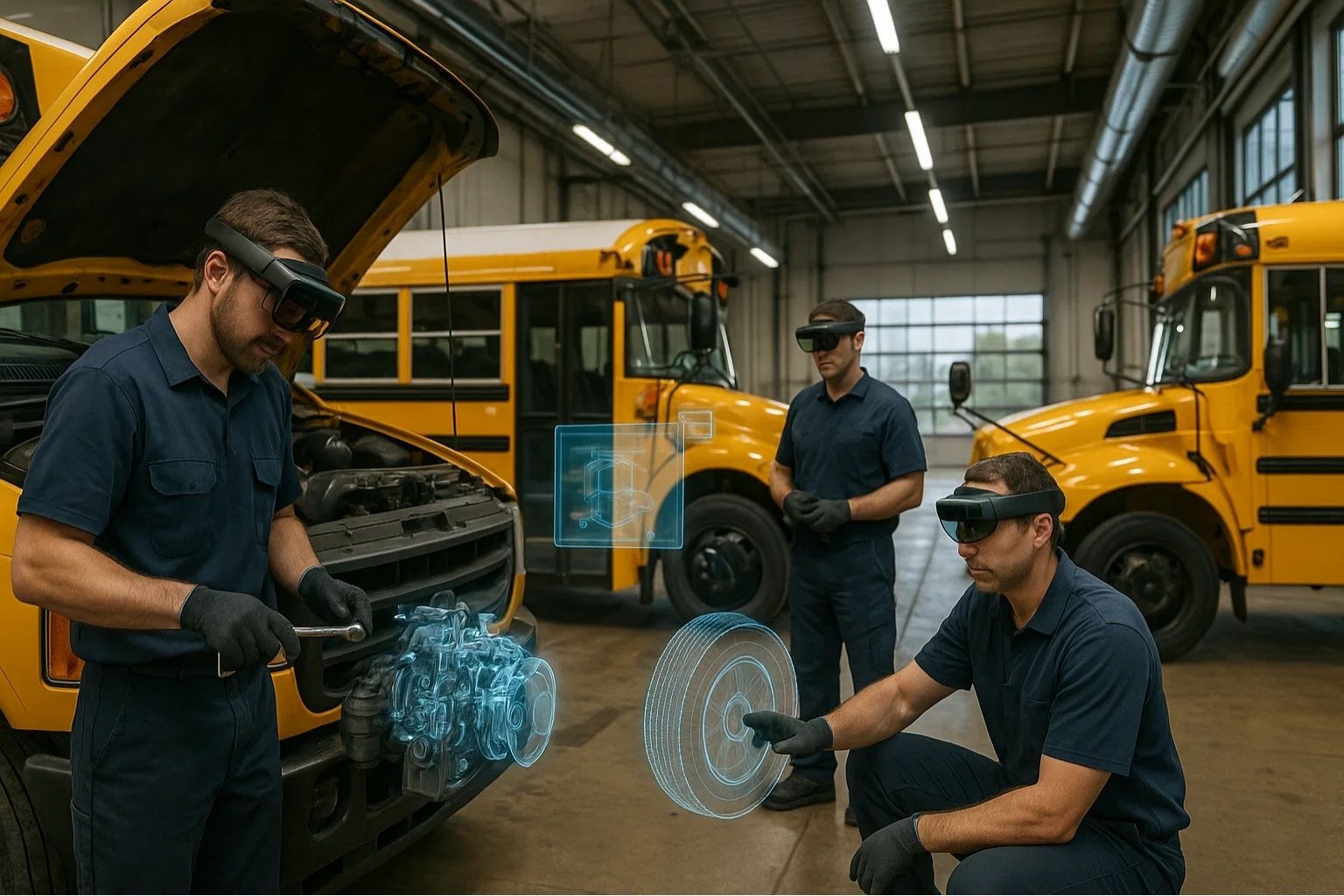The transportation industry is experiencing a revolutionary transformation through the integration of IoT-enabled sensors and real-time monitoring capabilities. Modern bus fleets across the United States are leveraging these advanced technologies to optimize operations, enhance safety, and reduce maintenance costs. The convergence of IoT technology with Bus CMMS platforms has created unprecedented opportunities for fleet managers to gain complete visibility into their operations.
Real-time fleet monitoring represents a paradigm shift from traditional reactive maintenance approaches to proactive, data-driven management strategies. By deploying sophisticated sensor networks throughout their vehicles, fleet operators can now track everything from engine performance to passenger comfort levels in real-time. This technological evolution has become essential for maintaining competitive advantage in today's demanding transportation market.
The implementation of IoT sensors in bus fleets has demonstrated remarkable results, with operators reporting up to 40% reduction in unplanned downtime and 30% improvement in fuel efficiency. These impressive metrics are achieved through continuous monitoring and instant alerts that enable immediate intervention when issues arise. Getting started with IoT-enabled monitoring systems has never been more accessible for fleet operators of all sizes.
Transform Your Fleet with Smart Monitoring Technology
Ready to revolutionize your fleet operations with cutting-edge IoT solutions? Discover how real-time monitoring can dramatically improve your operational efficiency.
Getting Started Book a DemoEssential IoT Sensors for Modern Bus Fleets
Critical Sensor Types and Applications
- Engine Performance Sensors: Monitor temperature, oil pressure, RPM, and fuel consumption in real-time to prevent catastrophic failures
- GPS and Telematics Units: Track vehicle location, route optimization, and driver behavior patterns for enhanced efficiency
- Tire Pressure Monitoring Systems (TPMS): Automatically detect pressure changes and temperature variations to prevent blowouts
- Passenger Counting Sensors: Provide accurate ridership data for route planning and capacity management
- Air Quality Monitors: Ensure optimal cabin conditions and HVAC system performance
The strategic deployment of these sensors through integrated Bus CMMS platforms enables fleet managers to create comprehensive digital twins of their vehicles. This virtual representation provides unprecedented insights into vehicle health and performance metrics that were previously impossible to obtain.
IoT Architecture and Integration Framework
Building a robust IoT infrastructure for fleet monitoring requires careful consideration of network architecture, data management, and system integration. Modern book a demo to see how seamless integration works with existing fleet management systems.
Network Connectivity Solutions
Reliable connectivity forms the backbone of any successful IoT deployment. Fleet operators typically employ a hybrid approach combining cellular networks (4G/5G), Wi-Fi hotspots at depot locations, and satellite communication for remote areas. This multi-layered connectivity ensures continuous data transmission regardless of vehicle location or network conditions.
The data collected by IoT sensors flows through edge computing devices installed on each bus, which perform initial processing and filtering before transmitting relevant information to centralized Bus CMMS platforms. This edge processing reduces bandwidth requirements and enables real-time decision-making even when connectivity is limited.
Data Management and Analytics
The volume of data generated by a fully instrumented bus fleet can be overwhelming without proper management strategies. Advanced analytics platforms integrated with getting started guides help fleet managers focus on actionable insights rather than raw data streams. Machine learning algorithms continuously analyze patterns to predict maintenance needs, optimize routes, and identify efficiency opportunities.
Predictive Maintenance Through Real-Time Monitoring
The transformation from reactive to predictive maintenance represents one of the most valuable benefits of IoT-enabled monitoring. By continuously analyzing sensor data, Bus CMMS systems can predict component failures weeks or even months in advance, allowing for scheduled maintenance during off-peak hours.
Engine Health Monitoring
Advanced algorithms analyze oil quality, vibration patterns, and thermal signatures to predict engine maintenance needs with 95% accuracy
Brake System Analysis
Continuous monitoring of brake pad thickness, fluid pressure, and temperature enables precise replacement scheduling
Transmission Performance
Real-time tracking of gear shifts, fluid temperature, and pressure patterns prevents costly transmission failures
Fleet operators who have implemented comprehensive IoT monitoring report average maintenance cost reductions of 35% within the first year. These savings result from optimized parts inventory, reduced emergency repairs, and extended component lifecycles achieved through data-driven maintenance strategies.
Real-Time Alert Systems and Response Protocols
The true power of IoT-enabled monitoring lies in its ability to provide instant alerts when anomalies are detected. Modern Bus CMMS platforms employ sophisticated alert management systems that prioritize notifications based on severity and operational impact.
Alert Categories and Response Times
- Critical Alerts (Immediate Response): Engine overheating, brake failure warnings, or severe mechanical issues requiring immediate vehicle shutdown
- High Priority (Within 1 Hour): Significant performance degradation, abnormal fuel consumption, or safety system warnings
- Medium Priority (Within 24 Hours): Minor component wear indicators, scheduled maintenance reminders, or efficiency optimization opportunities
- Low Priority (Weekly Review): Long-term trend analysis, driver behavior coaching opportunities, or route optimization suggestions
Automated response protocols ensure that appropriate personnel receive relevant alerts through multiple channels including mobile apps, SMS, email, and dashboard notifications. This multi-channel approach guarantees that critical issues never go unnoticed, even during off-hours or holidays.
Driver Performance and Safety Monitoring
IoT sensors extend beyond mechanical monitoring to encompass comprehensive driver behavior analysis. Accelerometers, gyroscopes, and GPS data combine to create detailed driver performance profiles that help identify training opportunities and recognize exceptional performance. Book a demo to explore our driver safety features.
Key Performance Indicators
Modern monitoring systems track numerous driver behaviors including harsh acceleration and braking events, excessive idling time, speed limit compliance, and route adherence. This data feeds into driver scorecards that promote healthy competition and continuous improvement among operators. Fleet managers using integrated Bus CMMS platforms report 25% reduction in accident rates and 20% improvement in fuel efficiency through driver behavior optimization.
The implementation of driver monitoring must balance operational benefits with privacy considerations. Successful programs emphasize positive reinforcement and coaching rather than punitive measures, creating a culture of safety and efficiency throughout the organization.
Enhance Your Fleet Safety with Advanced Monitoring
Implement comprehensive driver and vehicle monitoring to create the safest possible environment for passengers and operators alike.
Getting Started Book a DemoCybersecurity Considerations for IoT Deployments
Critical Security Measures
- End-to-End Encryption: All data transmissions must be encrypted using industry-standard protocols to prevent unauthorized access
- Device Authentication: Implement robust authentication mechanisms to ensure only authorized sensors can connect to the network
- Regular Security Updates: Maintain a rigorous update schedule for all IoT devices and associated software platforms
- Network Segmentation: Isolate IoT networks from critical operational systems to minimize potential attack surfaces
- Incident Response Planning: Develop comprehensive response protocols for potential security breaches or system compromises
Security must be a primary consideration from the initial design phase of any IoT deployment. Fleet operators should work with experienced getting started consultants to ensure their implementations meet or exceed industry security standards.
Integration with Existing Fleet Management Systems
The successful implementation of IoT monitoring requires seamless integration with existing fleet management infrastructure. Modern Bus CMMS platforms provide comprehensive APIs and integration frameworks that enable smooth data flow between disparate systems.
Integration Points and Data Flow
Key integration areas include maintenance management systems, fuel management platforms, route planning software, and passenger information systems. By creating a unified data ecosystem, fleet operators can maximize the value of their IoT investments while minimizing operational disruption. Book a demo to see our integration capabilities in action.
The integration process typically follows a phased approach, starting with pilot programs on select vehicles before expanding to the entire fleet. This measured deployment allows for system refinement and staff training while minimizing risk and ensuring successful adoption.
ROI Analysis and Cost Justification
Implementing IoT-enabled monitoring systems requires significant upfront investment, but the returns are substantial and measurable. Fleet operators typically see positive ROI within 18-24 months through various cost savings and efficiency improvements.
Quantifiable Benefits
- Fuel Savings: 15-20% reduction through optimized routing and improved driver behavior
- Maintenance Costs: 30-35% decrease via predictive maintenance and reduced emergency repairs
- Vehicle Uptime: 25-40% improvement in availability through proactive issue resolution
- Insurance Premiums: 10-15% reduction due to improved safety records and reduced accidents
- Labor Efficiency: 20-25% improvement in technician productivity through targeted maintenance
Beyond direct cost savings, IoT monitoring delivers intangible benefits including enhanced passenger satisfaction, improved regulatory compliance, and stronger competitive positioning. These factors combine to create compelling business cases for IoT adoption across fleet operations of all sizes.
Future Trends in IoT Fleet Monitoring
The evolution of IoT technology continues to open new possibilities for fleet monitoring and management. Emerging technologies including 5G networks, artificial intelligence, and blockchain are poised to further transform the industry landscape.
Next-Generation Capabilities
AI-Powered Predictive Analytics
Machine learning models that can predict failures with 99% accuracy weeks before they occur
Autonomous Maintenance Scheduling
Systems that automatically schedule and coordinate maintenance based on real-time fleet conditions
Digital Twin Technology
Complete virtual replicas of vehicles that enable simulation and optimization without physical testing
Fleet operators who begin their IoT journey today with platforms like Bus CMMS position themselves to seamlessly adopt these emerging technologies as they mature. The key is building flexible, scalable infrastructure that can evolve with technological advancement.
Frequently Asked Questions
How does Bus CMMS integrate with IoT sensors for real-time fleet monitoring?
Bus CMMS provides a comprehensive integration framework that seamlessly connects with various IoT sensors through standardized APIs and protocols. The platform aggregates data from multiple sensor types including engine diagnostics, GPS tracking, tire pressure monitors, and passenger counting systems into a unified dashboard. This integration enables fleet managers to view all critical metrics in real-time, set custom alerts for anomalies, and leverage predictive analytics to prevent breakdowns before they occur. The system's cloud-based architecture ensures that data is accessible from anywhere, while advanced encryption protects sensitive operational information. Getting started with Bus CMMS IoT integration typically takes less than 30 days for a complete fleet deployment.
What ROI can fleet operators expect from implementing Bus CMMS with IoT monitoring?
Fleet operators implementing Bus CMMS with comprehensive IoT monitoring typically see remarkable returns on investment within 12-18 months. The platform delivers measurable cost savings through 35% reduction in maintenance expenses via predictive maintenance capabilities, 25% decrease in fuel consumption through route optimization and driver behavior monitoring, and 40% improvement in vehicle uptime by preventing unexpected breakdowns. Additionally, the system reduces administrative overhead by 30% through automated reporting and compliance management. Many operators report annual savings exceeding $50,000 per bus when fully utilizing all Bus CMMS features. The platform's scalability means that benefits increase as fleets grow, making it an ideal solution for operations of any size. Book a demo to see a customized ROI calculation for your specific fleet.
Conclusion
The integration of IoT-enabled sensors with modern fleet management platforms represents a fundamental shift in how bus fleets operate and maintain their vehicles. Real-time monitoring capabilities provided by advanced Bus CMMS systems deliver unprecedented visibility into fleet operations, enabling proactive decision-making that reduces costs, improves safety, and enhances service reliability.
As the transportation industry continues to evolve, fleet operators who embrace IoT technology today position themselves for long-term success. The combination of real-time data, predictive analytics, and automated response systems creates a powerful framework for operational excellence that benefits operators, drivers, and passengers alike.
The journey toward fully connected fleet operations may seem daunting, but with the right technology partner and strategic approach, the transformation can be both smooth and highly rewarding. The evidence is clear: IoT-enabled monitoring is not just the future of fleet management—it's an essential requirement for competitive success in today's market.
Ready to Transform Your Fleet with IoT Technology?
Discover how Bus CMMS can revolutionize your fleet operations with cutting-edge IoT monitoring and predictive maintenance capabilities.
Experience the Power of Real-Time Fleet Intelligence
Join leading fleet operators who have transformed their operations with IoT-enabled monitoring and predictive maintenance solutions.
Getting Started Book a Demo






